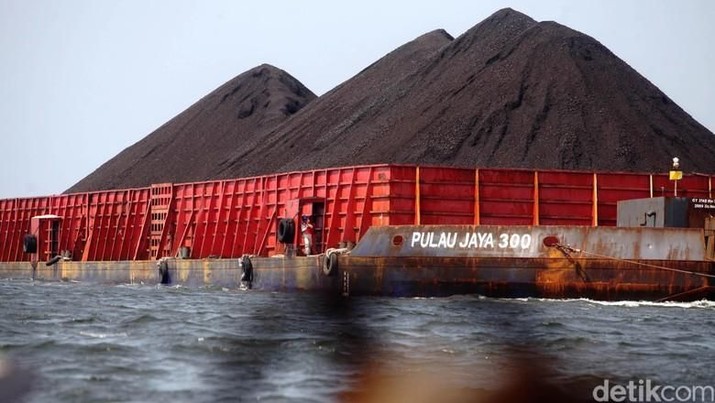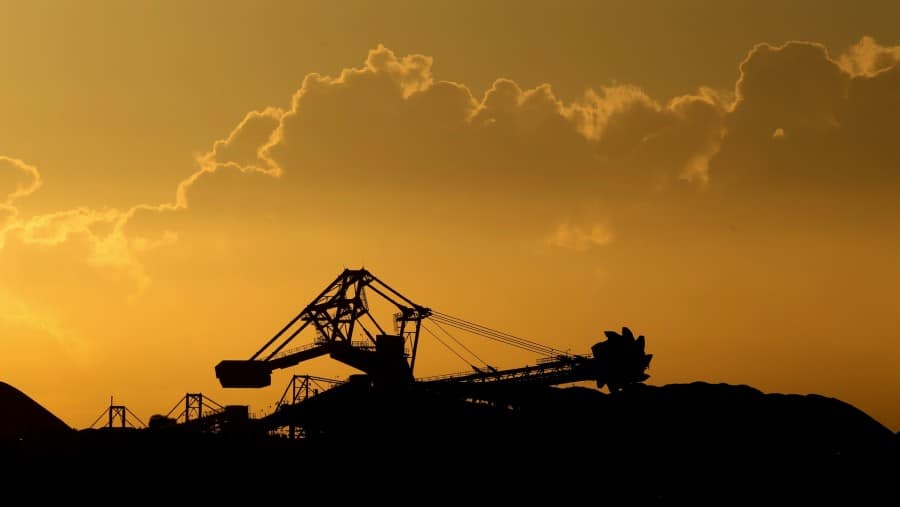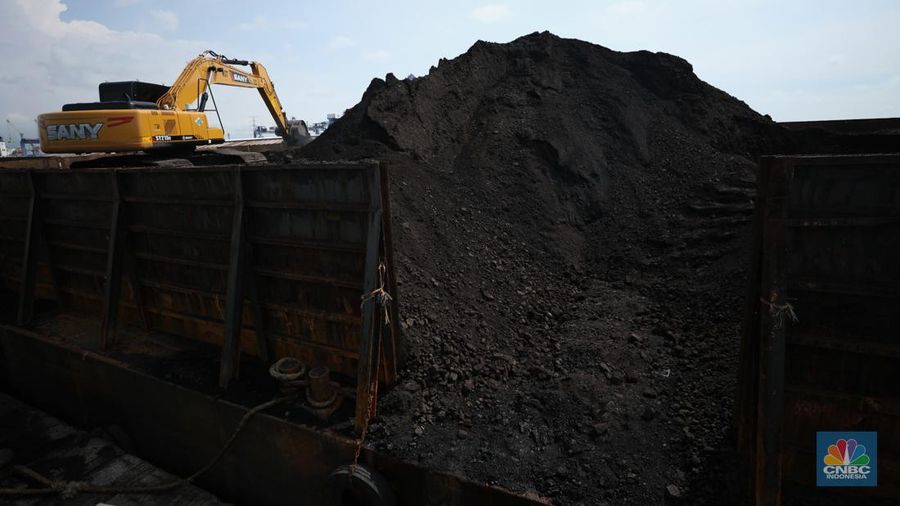
Jakarta, CNBC Indonesia – The weekly coal price is still moving in the green zone but is still in a downtrend and is getting further away from the psychological level of US$160/ton.
According to Refinitiv data, when trading ended on Friday (8/9/2023) the price of coal commodity (NCFmc2) closed at US$ 159.50/ton. This value weakened by 0.72% on a daily basis, however during the week coal was still in the green zone at 0.31%.
This week’s strengthening was the first to occur, after two consecutive weeks of correction, moving further away from the psychological level at US$160/ton and still in a downtrend since reaching this month’s peak at US$166.35/ton on September 5 2023.
The movement of coal prices which is still in a downward trend is influenced by a number of sentiments, especially from China’s economic conditions which are still sluggish even though there are accommodative policies from the government.
China’s services activity in the August 2023 period was observed to fall to 51.8. This value is the lowest in the last eight months and far from market expectations which predict it could grow to 53.6.
Not only that, China has also reported that exports and imports as of August 2023 have decreased again. Exports contracted 8.8% (year on year/yoy) to US$ 284.9 billion, while imports fell 7.3% (yoy) to US$ 216.51 billion.
This value shows that exports have been corrected for four consecutive months while imports have contracted for the last six months.
The correction in exports and imports was indeed lower than market projections, namely 9.2% and 14.5% and smaller than in July, but still raised a lot of concern from market players.
“In general, there is improvement in China’s exports and imports, but China’s trade is expected to hit the bottom in the next few months. This will hit many sectors in China,” said Hao Zhou, an analyst from Guotai Junan, quoted by CNBC International.
A number of indicators show that China’s trade will still be sluggish. Among these is the decline in goods shipments from South Korea and Japan. The European economy is also deteriorating which could threaten China’s exports in the future.
The continued correction in exports indicates that global demand has not yet recovered. In addition, the contraction in imports reflects domestic demand from China which is still low.
China’s sluggish exports and imports could be a negative factor for coal, because the country of origin of Panda is one of the largest exporters of commodities, including fossil energy.
Turning to gas, which is Europe’s preferred commodity and a substitute for coal, market players are waiting for clarification regarding potential strikes at Australian and Norwegian liquefied natural gas (LNG) facilities which continue to limit supply.
Strikes at Chevron’s two major LNG projects in Australia were postponed for 24 hours due to progress made in mediation talks, raising the possibility that the two sides were close to a cancellation agreement that pushed down gas prices in previous trade.
In addition, gas deliveries via the Norwegian pipeline to Europe remain highly restricted amid the expansion of several planned and unplanned maintenance.
This sentiment of uncertainty in gas supply is expected to lead to purchase speculation, so that gas prices are not in line with coal. European natural gas prices EU Dutch TTF (EUR) shot up 13.08% daily to 34.50 euros per MWh as of September 8, 2023.
Coal price movements are influenced by a number of sentiments, ranging from the impact of sanctions on Russia to supply problems from Indonesia.
As is known, Russia is still under a ban on coal exports, especially to western affiliated countries which have expressed concern about Ukraine. In fact, one of the Australian coal companies that Russia owns a little, through a Russian investment agency 7.93% and a Russian private equity company 18.2%, is threatened with sanctions due to its ongoing business operations.
Western countries barred Russia from international banking access and purchased new equipment as a form of sanction against the Russian invasion.
Apart from these sanctions, the European Union also prohibits coal imports from Russia starting August 10 2022. The embargo is part of the European Union’s sanctions over Russia’s invasion of Ukraine.
The main sentiment in the global coal market is also influenced by trading activity in the thermal coal market in Asia, which is expected to weaken again this week. The market forecast shows a “wait and see” trend as buyers are waiting for stronger positive signals.
On the other hand, mining companies in Indonesia, which are one of the largest exporters, have to overcome high production costs and large royalties. This is thought to be a factor that makes domestic miners reluctant to participate in spot market trading.
Indonesia has an important role as the main supplier of global coal, therefore developments in the country have an impact on the dynamics of coal prices as a whole. When mines reduce trading activity in the spot market, supply availability is also affected. Therefore, this situation is expected to push coal prices up.
The availability of spot cargo in the central and eastern Kalimantan region is also affected by problems, such as low water levels which affect barge movements. This causes delays in the cargo loading process, which in turn can disrupt supplies and cause coal prices to increase.




